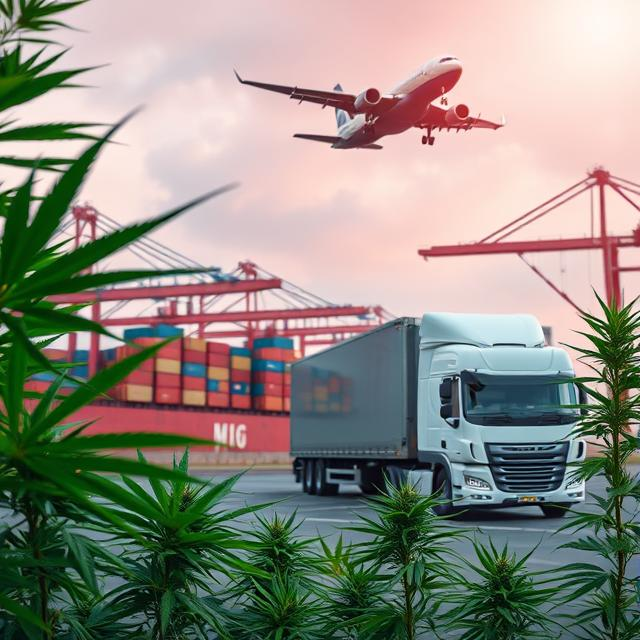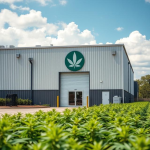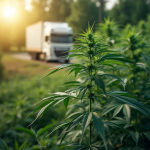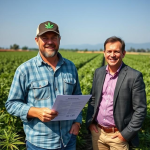Global vs. Local: Hemp Sourcing Strategies

The hemp industry, once constrained by regulations, is now experiencing significant growth worldwide, fueled by demand for its diverse applications, including textiles, bioplastics, wellness products and food. As this market expands, sourcing managers face a critical decision: should hemp and its derivatives be sourced locally or globally? Each approach presents unique logistical, regulatory, financial and sustainability challenges. For supply chain managers, finding the right balance between global and local sourcing is essential for creating a resilient, compliant and future-ready supply chain.
Understanding Global vs. Local Sourcing in the Hemp Industry
Global Sourcing
Global sourcing involves obtaining raw hemp materials, biomass, isolates, textiles, or finished products from international suppliers, often from countries like China, Canada, South America, the U.S. and Eastern Europe, where hemp cultivation is well-established.
Local Sourcing
Local sourcing refers to procuring from domestic or regional producers. In the U.S., this could mean sourcing from states like Colorado, Kentucky or Oregon; in Europe, it might involve working with producers in France, Germany or the Netherlands.
The Rewards of Global Sourcing
- Cost Savings: Lower labor and production costs in certain countries can lead to reduced overall expenses. Economies of scale from large overseas hemp farms often result in cheaper bulk pricing.
- Product Variety and Innovation: Access to a wider range of cultivars, extraction technologies, and processing methods. This exposure can introduce new product types, such as rare cannabinoids or hemp-based biocomposites not yet available locally.
- Supply Capacity: Global suppliers may have larger production capacities to meet scaling or seasonal demand, helping to mitigate risks associated with regional crop failures or climatic variability.
The Risks of Global Sourcing
- Regulatory Complexity: Different countries have varying THC thresholds, testing protocols and export/import requirements, which can lead to customs delays, seizures, or non-compliance penalties.
- Longer Lead Times: International shipping can add weeks to delivery times, increasing risks in just-in-time or fast-moving supply chains.
- Geopolitical and Trade Instability: Tariffs, sanctions, or diplomatic tensions can disrupt supply chains, while political instability in producer regions may threaten delivery reliability.
- Lack of Transparency: It can be challenging to verify labor conditions, pesticide use, or organic certifications, raising concerns about greenwashing or non-certified claims in international supply chains.
The Rewards of Local Sourcing
- Faster and More Reliable Delivery: Shorter lead times facilitate quicker production cycles and better inventory management, allowing for rapid adjustments to changing demand or product reformulations.
- Regulatory Alignment: Compliance with domestic laws is generally easier, and communication with local regulators and testing labs is more streamlined.
- Improved Supplier Relationships: Proximity allows for face-to-face meetings, farm visits, and easier dispute resolution, fostering trust and transparency, essential elements in emerging markets like hemp.
- Marketing and Brand Advantage: There is a growing consumer demand for locally sourced, sustainable and traceable products, enabling brands to position themselves as eco-conscious and community-supportive.
The Risks of Local Sourcing
- Higher Production Costs: Domestic growers may face elevated labor, compliance, and land costs and smaller farms may struggle to compete on price.
- Limited Cultivar Diversity: Certain cannabinoid profiles or fiber qualities may not be available from local sources and regional weather patterns can restrict year-round production.
- Capacity Constraints: Domestic producers may not consistently meet volume or quality specifications, particularly during harvest seasons, necessitating multi-supplier arrangements to achieve production goals.
Strategic Considerations for Balancing Global and Local Sourcing
- Conduct a Sourcing Risk Assessment: Map critical materials and evaluate supplier dependencies to identify vulnerabilities in each tier of the hemp supply chain.
- Diversify Supplier Base: Utilize global suppliers for base commodities while partnering with local producers for high-value or time-sensitive products to avoid over-reliance on a single region or vendor.
- Leverage Contract Manufacturing or Co-Ops: Collaborate with local contract processors to convert globally sourced biomass into compliant products or join regional hemp cooperatives to share costs and capacity.
- Implement a Tiered Sourcing Strategy: Use local vendors for compliance-heavy or retail-facing products while relying on global vendors for bulk biomass or commodity inputs.
- Build in ESG Metrics: Evaluate suppliers based on environmental, social, and governance performance, using sourcing as a tool to meet sustainability and ethical sourcing goals.
Navigating the Complexities of Sourcing in the Hemp Industry
Balancing global and local sourcing in the hemp industry is not a straightforward choice; it requires a dynamic strategy. By carefully weighing both risks and rewards, supply chain managers can develop sourcing models that are resilient, transparent, cost-effective and aligned with regulatory and consumer expectations.


